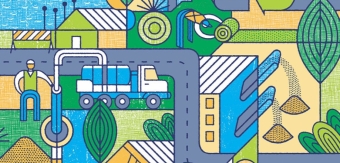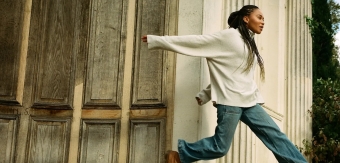Most people think they have interview preparation perfected, but you’d be surprised by how many people overlook basic elements, and some simple improvements, which can be key to your success.
We’ve gathered the top 4 tips to make your interview effortless and memorable.
1. Preparation is key
Preparation is key to success, so make sure you have sufficient time to prepare before your interview and dedicate some time without distractions.
Research
The first step should be researching the organisation where you could be working. Visit any relevant websites and social media, look at LinkedIn profiles and do a general search on Google to see if they have any press about latest projects or initiatives. You want to get a feel for the work that they do, their mission and values, structure and their objectives or goals. You can then align some of your answers in the interview to reflect this, mirroring back their own language to create a commonality. Write down any keywords that stand out as markers for the organisation, such as ‘fast-paced’ or ‘outcome focused’.
Revisit
Revisit the job description. Think about why you applied and what attracted you to the job. What are the parts that excite you? Note these down and keep them handy, so you can show enthusiasm about these in the interview. Which parts of the role do you think you would excel at and which parts are your skills lacking in? The job description should also give you an idea of the behaviours the interviewer is looking for. Look out for terms like ‘self-starter’, ‘team-player’ or ‘strong communicator’ so you can show that your behaviours and soft skills are also desirable.
And revisit your CV. This is the main piece of information that the interviewer holds about you. Are there areas that align with the job description that you are likely to be asked to elaborate on? Are there any areas that the interviewer may question or want examples of?
You should also check that your LinkedIn profile correctly reflects your CV and is up to date. Make sure your profile photo is professional and you've included volunteer information, any groups and have some good recommendations from colleagues.
After the interview, take some time to reflect on your performance and gather any interview feedback from the interviewer or other sources. This feedback can provide valuable insights into areas of improvement and help you better prepare for future interviews.
Common Questions
Prepare for the most common interview questions.
-
These are generally competency-based questions such as:
-
Making effective decisions
-
Collaborating
-
Leadership
-
Strategic thinking
-
Organisational skills
-
Working under pressure
-
Attention to detail
-
Handling a difficult decision or situation
-
Motivation
-
Taking control of a situation
-
Problem solving
-
Creativity
You may need an example for each area detailing the situation, your response to the situation and the positive outcome.
Your questions
What questions do you have about the role or the organisation? If the conversation is quite casual, you should be able to ask questions as they naturally arise, but it’s also important to ask a question at the end of the interview to show you are still interested. This could be in regard to the contract length or timeline, or “when are you likely to make a decision?” Write down your questions as after processing other conversations, you may need a reminder.
2. Promoting you
Clarify your ‘selling points’. Why would you be good at the job and what sets you apart from other applicants? Identify key responsibilities of the role and prepare several examples of your experience and achievements in these areas. Where possible use statistics to evidence this.
Specific Examples with STAR
You can use the S.T.A.R method to create quick and effective examples: Situation, Task, Action, Result.
-
Situation: Set the scene and give the necessary details of your example
-
Task: Describe what your responsibility was in that situation
-
Action: Explain exactly what steps you took to address it
-
Result: Share what outcomes your actions achieved
You must describe a specific event or situation, not a generalized description of what you have done in the past. Be sure to give enough detail for the interviewer to understand
Showcase your work
If the interview is specific to certain types of work such as design, content, or products, you may have been asked to, or may just want to, showcase examples of your work. Make sure examples are relevant to the role and showcase your best skills.
You may want to go in-depth with a case study, outlining objectives and processes or just create a short screenshare presentation that acts as a portfolio. If you do this, ensure you can concisely talk through or narrate your work to give your interviewer a good understanding and positive takeaway points. You want to be memorable. Practice this prior to the interview with a friend to get feedback and identify areas that could be improved.
3. The Set Up
Have a trial run before the actual interview to resolve any issues.
Technical Difficulties
There is nothing worse than being failed by technology in an already stressful situation. Prior to the interview (the previous day and in the hours before) test your technology. Do you know which video platform you will be interviewed on? Have you used it before?
Set it up and test it out. Make sure you are familiar with all the functionality or features in case you are asked to change any settings or screenshare unexpectedly. It is better to do an interview on a laptop, rather than a phone as you have more control. Make sure your camera and microphone are working and set to appropriate levels. Also make sure all software updates are completed because no one wants a computer update starting randomly mid interview.
Location
Where will you do the interview? Do you have a reliable WiFi connection?
Conduct the interview somewhere private and quiet where you won’t be disturbed. Notify family or housemates ahead of time or book a meeting room if you are in a shared space/office. Test sitting in-front of the camera and take a good look at your background, as well as without you in frame in case you need to get up at any point. You need a minimal and non-distracting background, with good lighting so you can be clearly seen.
Check your camera angles, as some laptop cameras can be set lower. Try to position the camera for a clear and proportioned head and shoulders shot where you can make easy and comfortable eye contact with the camera. Distancing is also key; you don’t want to look too far away or equally right on top of the screen. Make sure your chair or seat is also comfortable.
If your interview is taking place in person be sure to identify the location and plan your route the day before, leaving yourself enough time in case of travel disruption.
4. First impressions count
According to research, it takes 7 seconds to make a judgement about someone when first meeting them. Whether we mean to or not, we can make unconscious judgements based on appearance and body language, so it’s important to look presentable.
Wellbeing
This is an area that is often overlooked but can really make an impact on how you present yourself and how you feel in an interview. The night before the interview, try you get a good night’s sleep. This will help you feel well rested, refreshed and more alert in the morning .Make sure you’ve eaten prior to the interview, nothing too heavy, and that you are well hydrated. Have a drink on hand in the interview as you’ll be talking for a while.
Dress The Part
Dress appropriately for the role or organisation. It’s better to be dressed more formally, than looking too casual. Even if your interview is via video link, dress as if you are meeting in person, full body in smart attire as you may need to move away from the screen. Beyond clothing, ensure that you are also clean, tidy, and looking polished. Looking your best translates into feeling your best and will give you confidence.
Body Language
Body language is important. You want to a strike a balance between enthusiasm and professionalism. Ensure you have open body language such as good posture, arms relaxed by your side and a straight back and use a good amount of eye contact (to the camera). Be aware of your gestures, it’s good to have some movement to main interest and feel comfortable, but you don’t want to be so animated that it becomes distracting. Monitor your tone of voice to keep things friendly and enthusiastic, and remember to smile.







Viv July 3rd, 2022, in the evening
My CV is my work. I turn up at interviews with two A3 sized folders with hand drawn sketches + an A3 sketchbook.It's the only way I can prove that I'm an unconventional thinking human being and not a slave to CAD and computers.